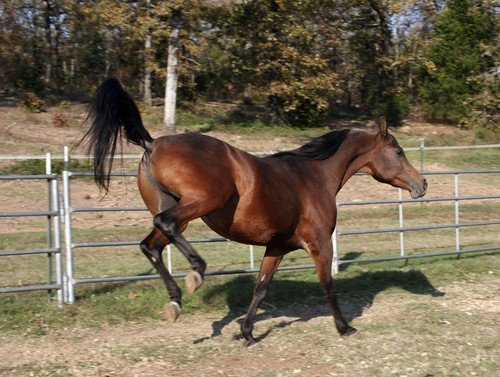Weaving is a common behavior in horses, occurring in stable, though some horses may weave in their settings. Essentially, a horse walks in its place and steps off first with a front foot followed by the other, and bob the head and neck sideways. It is necessary to stop a horse from weaving.
Some horses may often enter into a trance state while engaged in weaving, which may cause strain or damage to the joints, ligaments, hooves, or tendons. If prolonged and unmanaged, weaving may cause constant exertion in horses, leading to weight loss and other behavior that interferes with their food habits and daily routine. Learn about horse weaving here.
To stop a horse from weaving, it is important to understand the nature of the horse and the probable causes of weaving. You may know how to stop a horse from weaving, but you may not be able to implement all of that unless you know the horse very well.
How to Help a Weaving Horse
Investigate the Cause of Weaving
Generally, movement-related behaviors are caused due to space constraint in stables. It would help if you explored the cause from this angle. Watch out for space where the horse weaves. Is it weaving in the stable or in the field? When does the horse weave? What happens before and after horse weaves? Detect the cause.
Give more Pasture/Herd Time
Healthy herds of horses consist of both males and females, of varying ages, with a minimum number of seven members. Having two to three, herd mates for interaction and companionship can be great.
Let the Horse Gel with Other Horses
Use pasture, a large barn, or an arena, to let the horses roam free.
Give Forage to Horses in Small-mesh Hay Nets to Breed Intimate Foraging
Use a small mesh to make sure horses work a little harder to get some hay out. It is one way of increasing the time spent eating without giving more food. It is good for the gut, especially for horses that tend to finish their hay quickly and get bored.
Ensure Stabled Horses have Sight of Other Horses
Horses need to have a company, especially if they weave. Please keep them in stable such a way so that they can see other horses. If some horses gel well, keep them together in stable or safe bran.
Create a Pleasant Environment
If you do not see any changes in the horse’s behavior, the chances are that weaving has become a habit. It is very difficult to break this habit, but not impossible.
Pay attention to little things that the horse enjoys. Add new and interesting things to their daily routine – interactive toys, classical music, brushes to let them rub against the wall, etc.
How to Prevent a Horse from Weaving
- Increase hours of exercise
- Manage the horse from the pasture
- Please make efforts to reduce predictable factors, such as food arrival time (it may be tough as most barns follow a particular schedule)
- Add a stall mirror for a sociable horse. However, if the horse is not social, a mirror could lead to undesirable behaviors like lunging and kicking in the stall
- Do not use anti-weaving grills or similar devices. Research shows that such devices frustrate the horses further
- Wean gradually, in groups, not suddenly
How to Treat a Horse Weaving Behavior
Firstly, you must go to a veterinarian and get the horse checked thoroughly. Once the vet confirms that there are no physical reasons for weaving, he would be able to give you an insight on how to handle the weaving behavior. While it is not guaranteed, you could do several things to encourage the horse and help stop weaving.
- Increase exercise opportunities for the horse so that it can let out pent up energy
- Provide adequate time to the horse to graze, especially when other horses are also grazing
- Provide natural feed to the horse at regular intervals to help break the monotony of the horse’s day
- To add variety, add feeding stations around the stable
- Change the horse’s living environment; make it a better place than the herd-like arrangement
- Add some companions for the horse, which could include horses, sheep, goat, or other animals
- Provide some visual stimulation to the horse’s stall
- Ventilate the stall properly
- Introduce a mirror at the eye level of the horse so that it is visually stimulated and does not feel isolated
The Theory of Mirror
The theory holds that when horses are weaving, their vision changes, which brings comfort. A lot of research is still undergoing, but the answer is one – Mirror.
Weaving horses find instant comfort in a mirror. Install a mirror in the stall and trailer. It would reduce their stereotypic behavior simply by mimicking visual contact with the rest of the horses, thus reducing risks of social isolation.
Tips to Choose the Right Mirror
- Look for stainless steel and polished mirror
- Do not buy a mirror with sharp edges
- Choose Plexiglas type mirrors, neither too big nor too small
- Keep the mirror spotless and clean, away from water and food
- Studies reveal that horses prefer having company to their sides more than across the barn side. Hence, consider this before hanging the mirror in the stall
- Installing a mirror should be a deliberate choice to ensure that the horse stands next to it. Do not install wall-to-wall mirrors, as it creates anxiety.
Should you notice any signs of weaving in the horse, you might want to take it to a veterinarian. Only upon complete examination of the horse, your veterinarian can determine the underlying health conditions causing this behavior.






